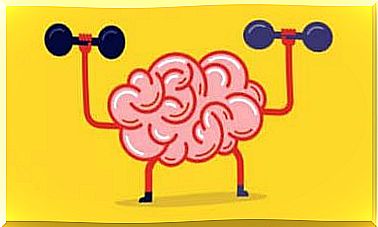Mindfulness At Work: 6 Keys To Health And Wellness

Are you stressed at work? Or are you having a hard time getting all your work done by the end of the day? Exercising mindfulness at work is a way to improve health, well-being and productivity. It can help you stay focused on important tasks, build self-confidence, and reduce the mental and emotional exhaustion that is all too common in the workplace today.
We have all heard of mindfulness. It is mentioned so often on websites and in magazines that it is easy to believe that it is just another trend, such as spinning, Crossfit or even botox smoothies. But do not get the wrong idea, because meditation and mindfulness are used as a therapeutic technique in clinical settings for a variety of purposes.
Mindfulness has only become more and more popular since Joh Kabat-Zinn, a molecular biologist at MIT ( Massachusetts Institute of Technology ), popularized this Buddhist meditation strategy. To support the benefits, Dr. Kabat-Zinn has conducted rigorous scientific studies on how mindfulness led to major changes in populations under high stress (inmates in prisons, workers in high-stress environments, people with chronic pain…).
Mindfulness is not just a trend. It is a health and wellness technique that is gaining more and more popularity and recognition. In fact, it can even help patients who have overcome depression to avoid relapse. It is definitely worth a try. Tracking your productivity before and after practicing mindfulness at work is a great way to see how it can help you in your workplace. Let’s take a look at how practicing mindfulness at work can help you.

How can mindfulness at work help you?
David Lynch, a well-known film director, screenwriter and artist, often leaves his own film set several times a day to find a quiet room or a quiet area outdoors. He “runs away” to meditate for a few minutes, because he knows it will help him to think clearly, be creative, deal with stress and find himself.
You are obviously not David Lynch, and your workplace is probably less eventful: an office, a factory, a workshop, a school, a taxi, a hotel or a hospital with rooms to be cleaned, patients to take care of, products to marketed… But no matter where you work and what you do, we are all under pressure, experiencing anxiety, and often have to multitask.
But if you put in a little effort and try to exercise mindfulness at work, then it can help you get the following benefits:

Benefits of mindfulness
- You can block out overstimulating environments and focus on your work.
- It helps you think clearly, brainstorm ideas, and respond effectively to get the most out of any situation.
- You can effectively deal with stress and pressure.
- You gain self-confidence and self-knowledge, which helps you know your limits, but also be able to anticipate opportunities.
- It makes you feel in control of yourself and your situation.
- It triggers positive emotions to improve relationships with colleagues or even better, recognize what is bothering you, and find out if you can change it or not.
How can you use mindfulness at work?
Now we will discuss some specific strategies for how to practice mindfulness at work. But first, keep a simple truth in mind. No one learns to meditate or practice mindfulness in a week or two. This exercise requires time and determination. Exercising mindfulness means thinking about all the thoughts that control your mind and body and then refocusing your thoughts on peace and balance.
The following strategies can help you get started.
Your goal
Before you go to work, decide what you want to do that day. Define your goal clearly (it can be as simple as doing your job well and returning home without stress and worry).
Here and now
When you are at work, always be aware of the present, what is happening here and now. Focus on what you are working on, not what your colleagues are talking about, street noise, your phone, the message you are waiting for, your plans for tomorrow, what you need to do when you get home…

Restart your mind sometimes
Take 1-minute mental breaks. Obviously, none of us have the opportunity to leave our jobs to go out and meditate for 20 minutes when we need to. However, you can train your mind to take relaxing 1-minute breaks every half hour or every 40 minutes. When taking 1-minute breaks, relax your eyes and take a deep breath, hold your breath for a moment, and exhale… Do not think about anything during the 60 seconds. Just let the pressure and worry go.
Do not multitask
If there is one thing all workplaces have in common, it is multitasking. We take a call while answering an email, while thinking about what we need to do, solve, decide, communicate… It’s easy to get carried away in multitasking because we believe that doing many things in one time is more productive. But it is not.
Therefore, a key to mindfulness at work is to do one thing at a time and focus completely on it. This helps you avoid mistakes or lost details to give an optimal end result.
Use stress to your advantage
Most people think that stress is the productivity of the enemy. However, if it is well controlled and well managed, internal stress can be your ally. It not only creates motivation, it helps you stay awake and ready to work.
However, your stress level needs to be handled carefully so that it acts as a stimulus. This makes your boundaries very important, so that you get enough stress to be encouraged, but not overwhelmed.
Accept what you can not change
Practicing mindfulness at work also means accepting what you cannot change. For example, it is not good use of energy if you get angry every day at the colleague who is always late, at the boss who is always in a bad mood, at the colleague who just gossips and has useless ideas…

Some dynamics and attitudes are like a stone wall: there is no point in hitting it or trying to move it, you just have to accept that it is there. But accepting does not mean that you give up, it means that you become more aware of the situation in order to handle it efficiently and calmly. After all, exercising mindfulness at work also means trying to be optimistic at work. Exercise mindfulness, see things in a positive light, release the weights of stress and exhaustion, and fly freely.
Give these tips a try in your workplace. The results may surprise you.









